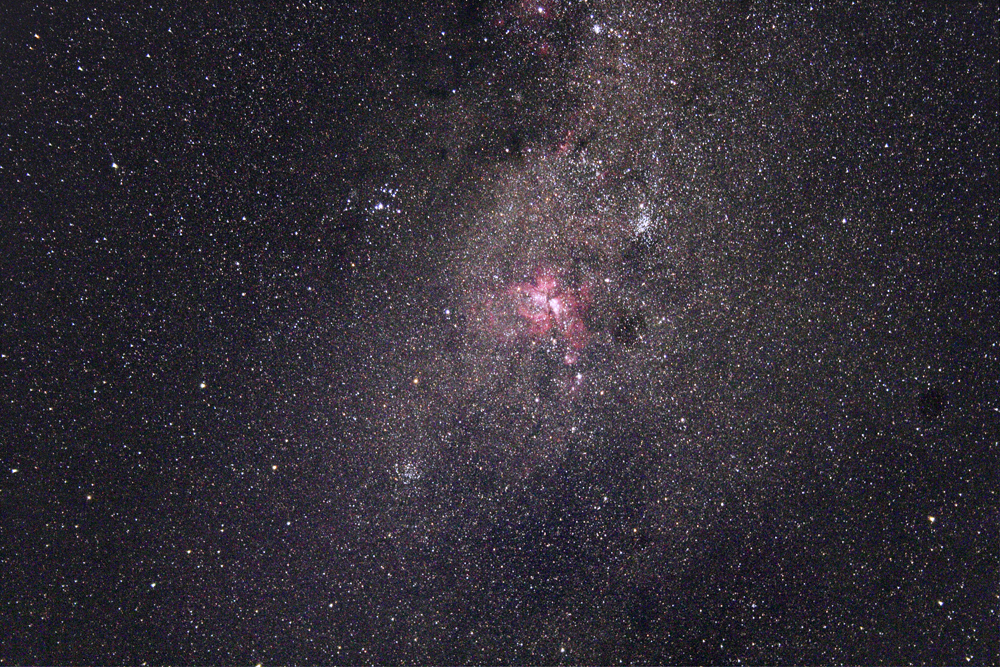
40 minutes exposure. Fuji Super HG V 400 film.
120mm f/2.8 Pentax lens.

The Keyhole Nebula (also sometimes called the Eta Carina Nebula) is the brightest emission nebulae in the sky. It is easily visible to the naked eye as a cloudy patch in the Milky Way, not far from the Southern Cross. The Keyhole nebula is definitely one of the top 5 objects of the southern skies. Even in binoculars, the field is strewn with patches of light and dark nebulosity. In a telescope the view is magnificent. Situated in the heart of one of the richest portions of the Milky Way outside of Sagittarius, the entire region abounds in clusters and double stars. Interestingly however, there are few emission nebulae. It is as though all of the nebulae in the region had been gathered up together to make one stupendous object! In the photograph below there are more than a dozen open clusters catalogued as well as 6 small emission nebulae with designations. The very large and bright open cluster to the left of NGC 3372 is NGC 3532.
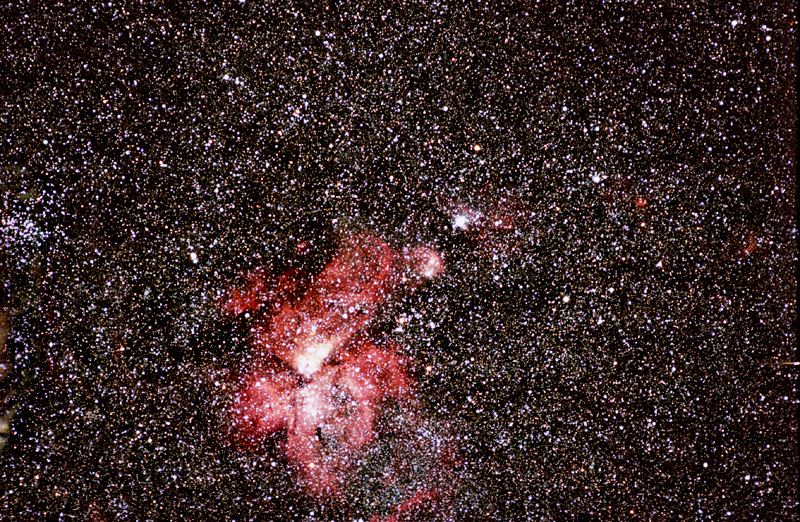
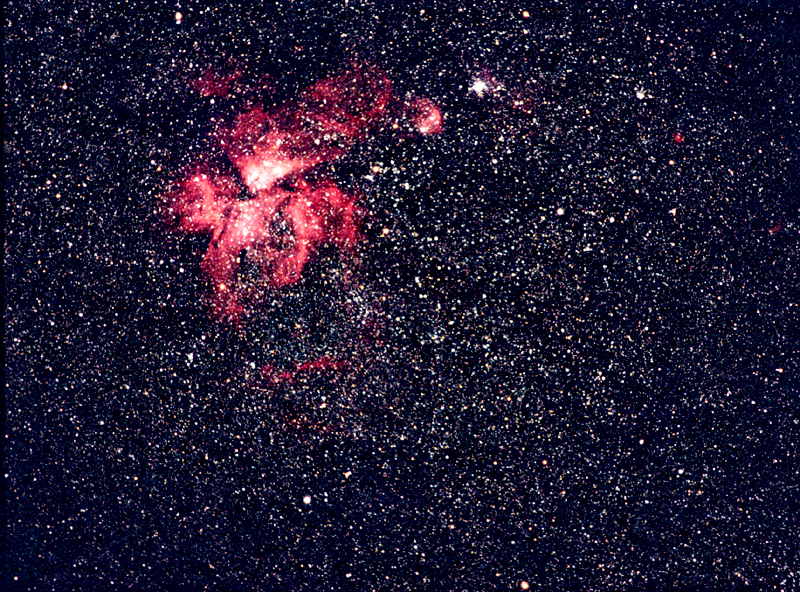
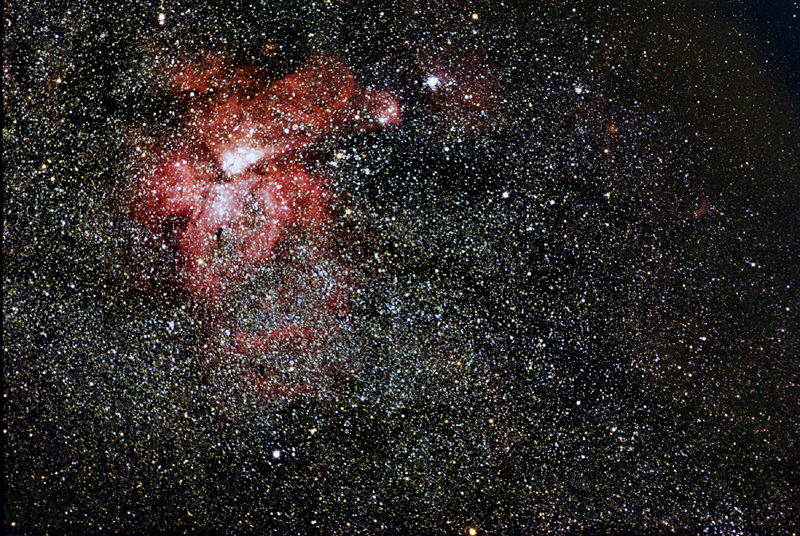
20 minutes exposure. Fuji Super HG V 400 film.
300mm f/2.8 Pentax lens.
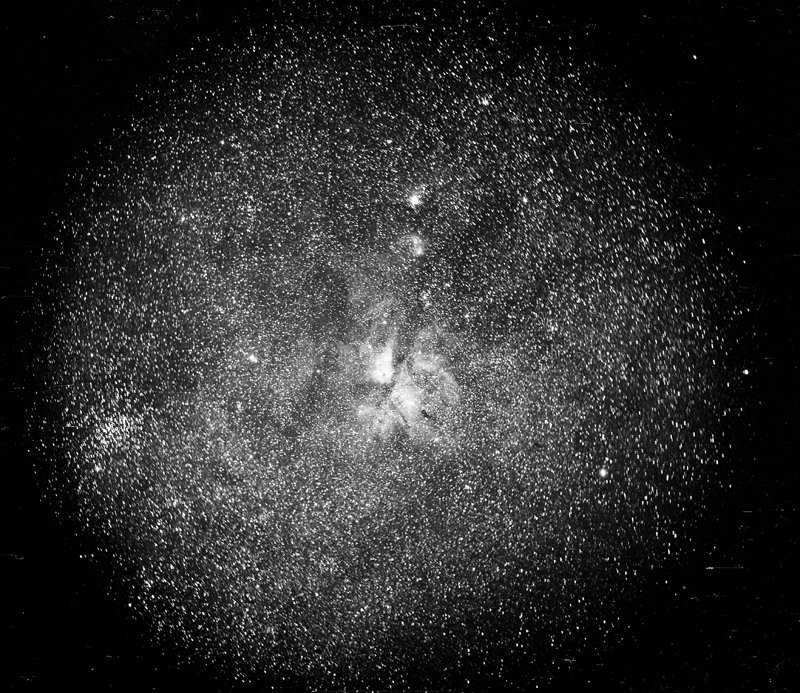
25 minutes exposure. Gas hypered Ilford HP5 wide format film.
6" f/3.75 Schmidt-Newtonian at prime focus.
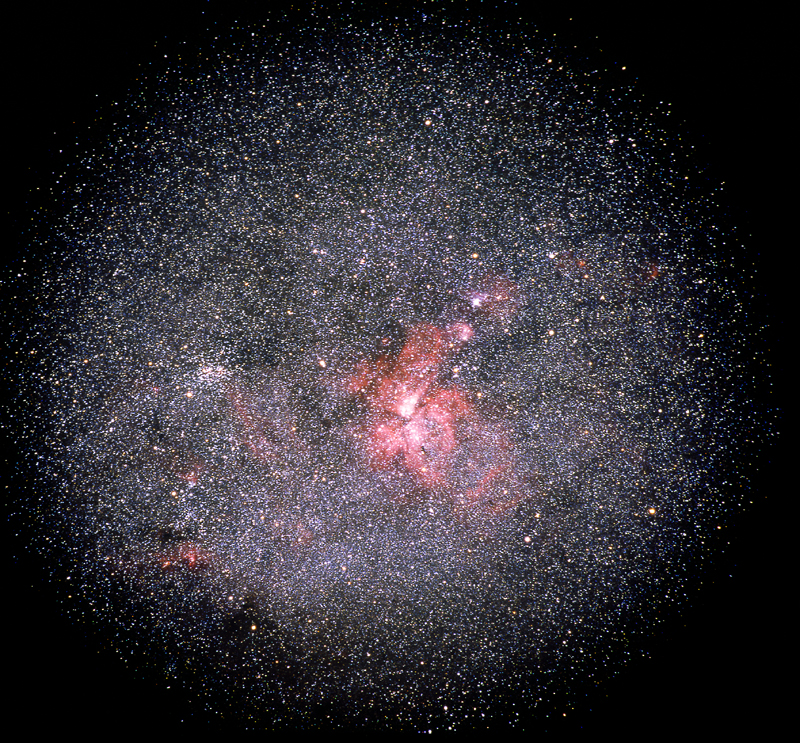
35 minutes exposure. Kodak Ektachrome 400 wide format film.
6" f/3.75 Schmidt-Newtonian at prime focus.
Deep within the brightest portion of the nebula is the hypermassive star eta carinae. About 150 years ago this star was the second brightest star in the sky as it underwent a nova-like outburst that lasted many years. A 10" telescope will reveal the tiny nebula surrounding this star, called the Homuclus, which is material that has been ejected by the star.
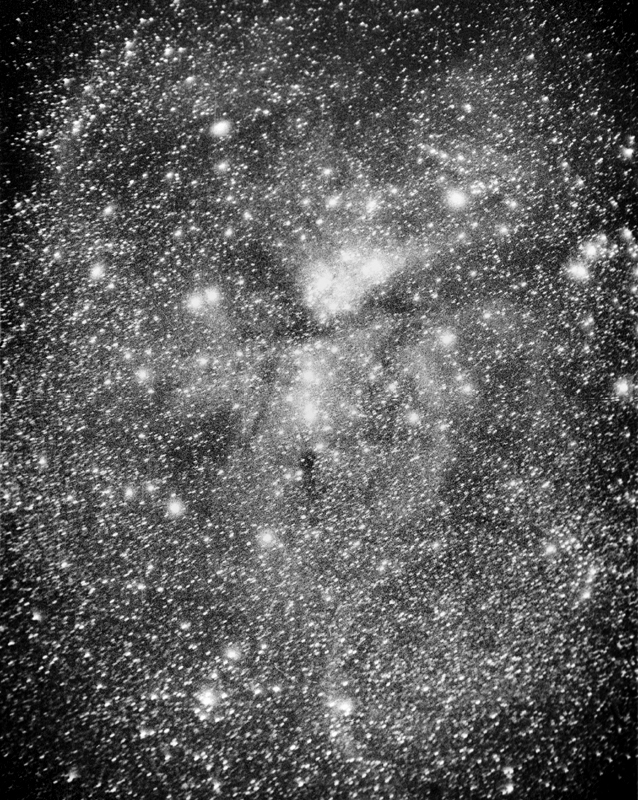
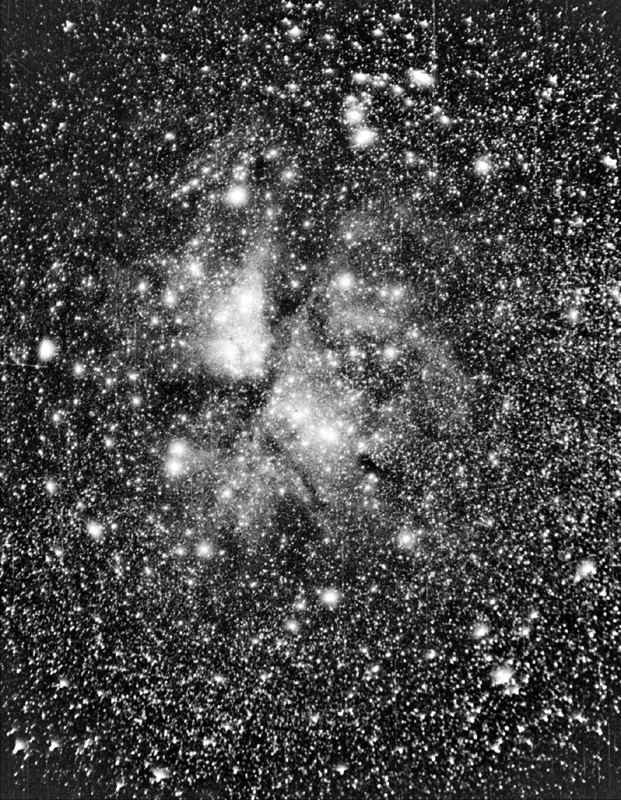
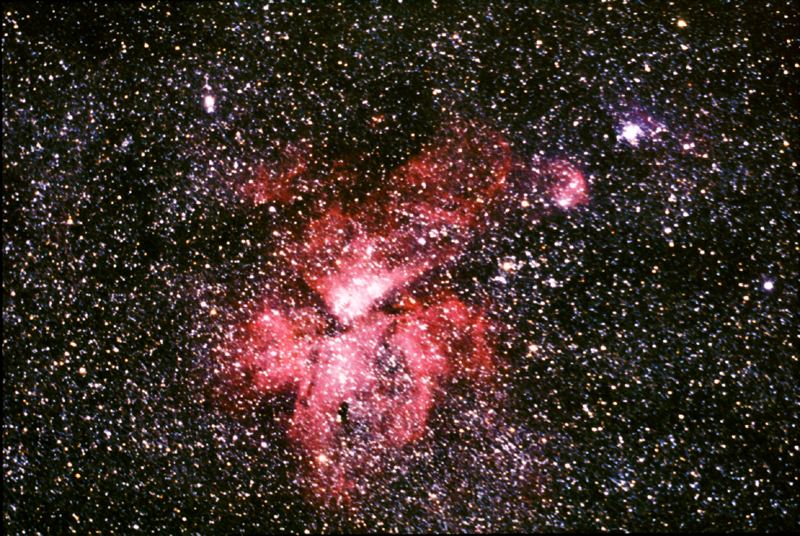
30 minutes exposure. Fuji Provia 1600 film.
5" f/5 refractor at prime focus.
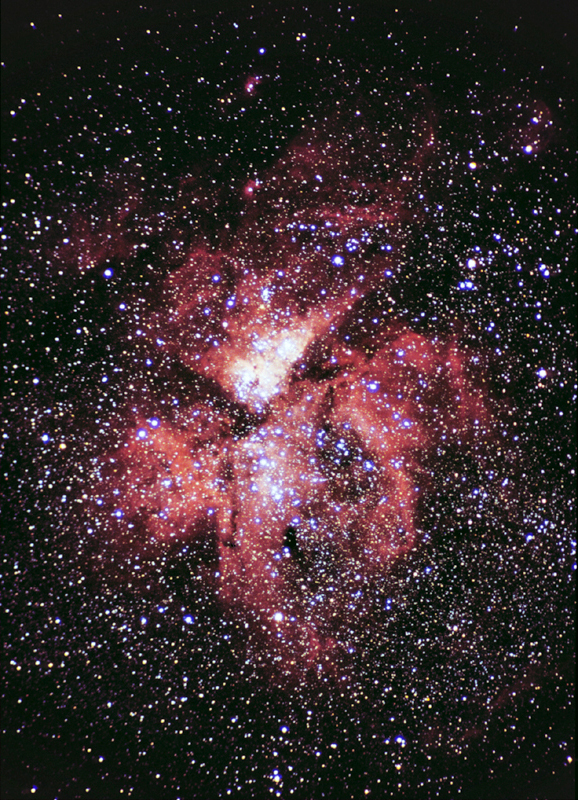
45 minutes exposure. Kodak Ektachrome 400 slide film.
5" f/5 refractor at prime focus.
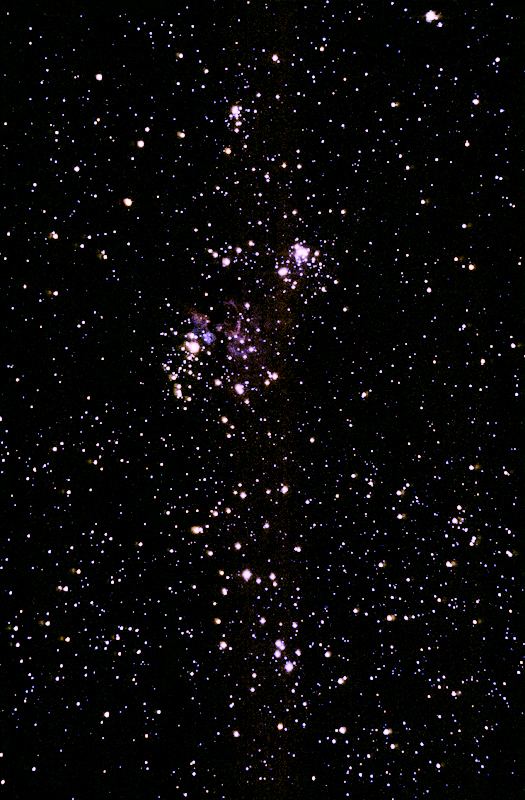
20 minutes exposure. Fuji Provia 400 slide film.
300mm f/6 newtonian telescope at prime focus.
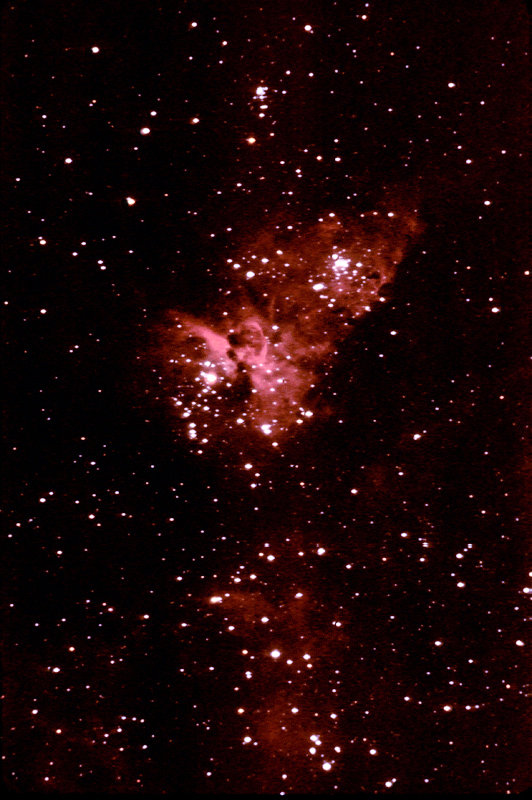
40 minutes exposure. Kodak Ektachrome 400 wide format slide film.
300mm f/6 newtonian telescope at prime focus.
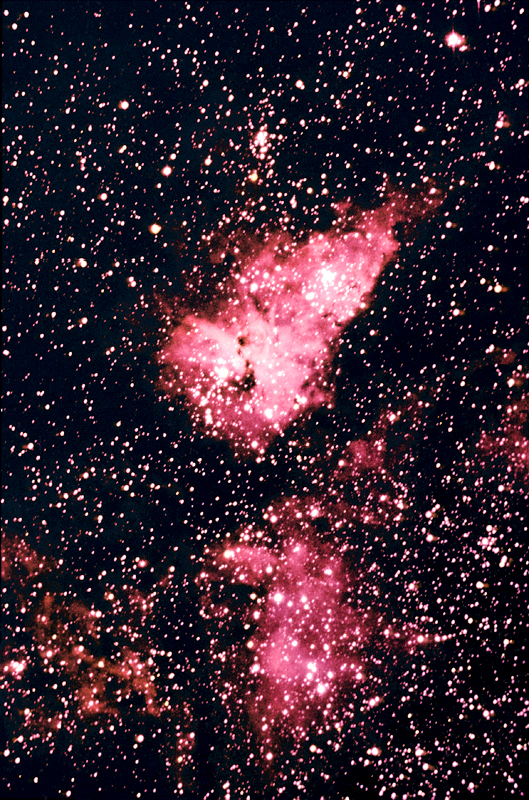
30 minutes exposure. Fuji Provia 400 slide film.
300mm f/6 newtonian telescope at prime focus.
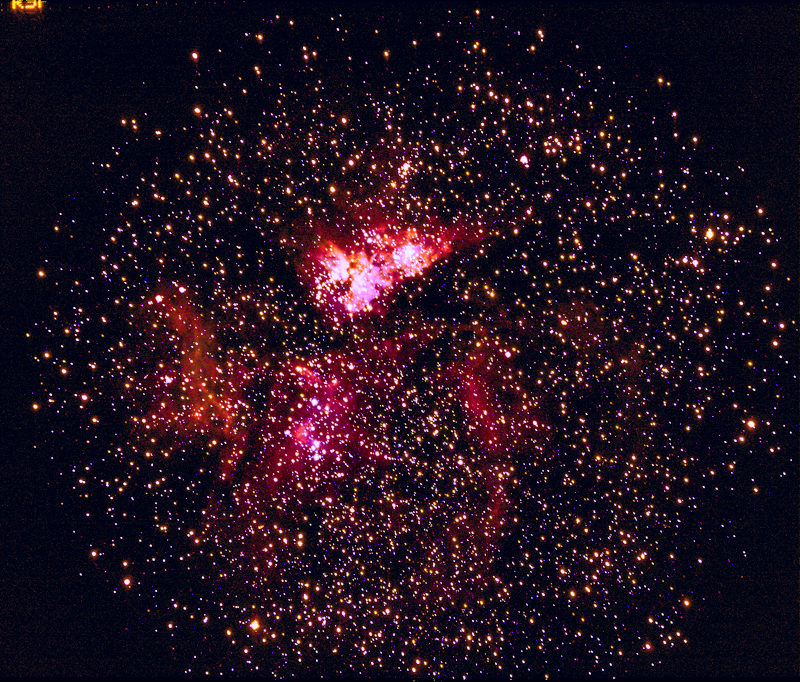
30 minutes exposure. Agfachrome 400 wide format slide film.
300mm f/6 newtonian telescope at prime focus.
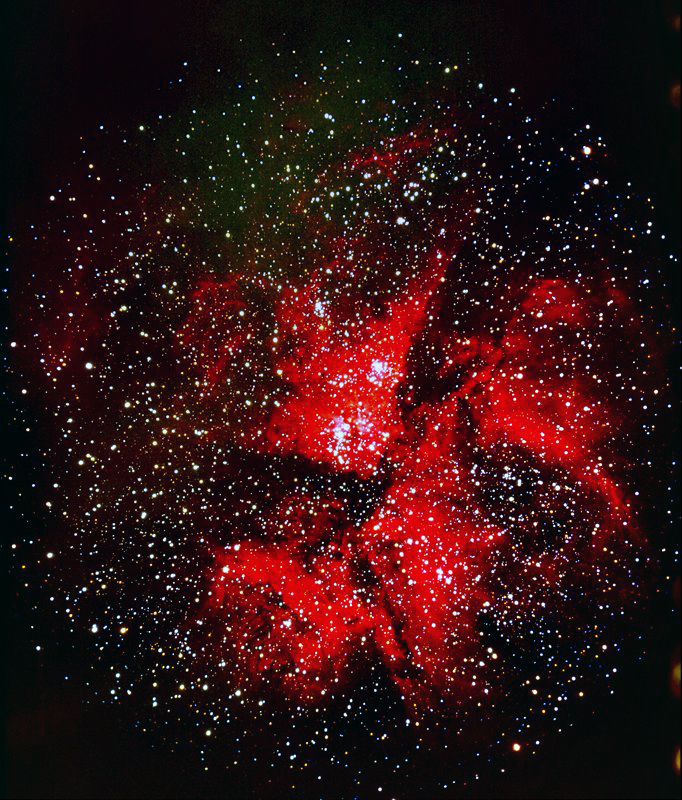
40 minutes exposure. Kodak Ektachrome 400 wide format slide film.
300mm f/6 newtonian telescope at prime focus.